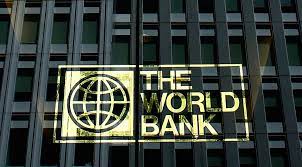The enduring conflict between Israel and Hamas, spanning over seven decades, continues to cast a profound and lasting impact across the Middle East. In recent times, heightened hostilities have led to significant casualties on both sides, triggered by a series of assaults initiated by Hamas on Israeli towns on October 7. This has resulted in a robust military response from Israel, exacerbating the devastation. However, the repercussions of this conflict have reverberated globally, sparking protests in several Western nations and carrying substantial economic implications.
The World Bank has cautioned that the escalating Israel-Gaza conflict may disrupt crude oil supplies, potentially pushing oil prices to an unprecedented peak of $157 per barrel. This prediction mirrors the 1973 Arab oil embargo crisis, suggesting a potential global supply shrinkage of six to eight million barrels per day. Such a cut in supply could trigger a significant surge in prices, impacting economies worldwide.
Under a moderately severe “medium disruption” scenario similar to the impact of the 2003 Iraq war, the reduction in supply might range from three to five million barrels per day, driving prices to hover between $109 and $121 per barrel. Despite these concerning scenarios, the World Bank’s baseline forecast is somewhat more optimistic, projecting oil prices to average $90 per barrel this quarter, declining to $81 next year in the event of a global economic downturn. Investment banks like Goldman Sachs and UBS anticipate stable oil prices ranging from $90 to $100 per barrel over the next twelve months.
Beyond oil, other commodities are also affected. In times of conflict, gold, often considered a safe-haven asset, garners increased interest among traders seeking to capitalize on its appeal, despite the inherent riskiness of CFD trading. However, heightened attention from traders can lead to increased volatility, diminishing its status as a safe-haven asset.
The conflict has had dire repercussions on local businesses in Gaza, where employment has plummeted by 61% since the hostilities began, resulting in a loss of approximately 182,000 jobs, according to the International Labour Organization (ILO). The economic fallout extends to the occupied West Bank, experiencing a 24% job loss, equating to about 208,000 jobs, due to the conflict’s spillover effects. Daily income losses in these territories amount to an estimated $16 million, painting a grim outlook for their economies.
Conversely, in the Israeli town of Sderot near the Gaza Strip, businesses persist despite the conflict. However, they face the arduous task of repairing war damages and protecting their workforce. While both economies are affected, the economic toll in Gaza is significantly more severe.
Examining another geopolitical event, Russia’s invasion of Ukraine in 2022 caused substantial disruptions in global commodity markets. The conflict led to immediate interruptions in oil and gas supplies, notably impacting Europe, heavily reliant on Russian energy. This situation heightened tensions in energy markets, causing prices to rise as countries sought alternative sources.
The conflict in Ukraine also severely affected grain markets, given Ukraine’s significant role as a major exporter of wheat and corn. Blockages at Ukrainian ports by Russian forces resulted in price spikes and concerns over global food shortages, impacting industries reliant on agricultural commodities.
Furthermore, prices of metals like aluminium and palladium surged due to Russia’s key role as a producer. Sanctions and logistical challenges further constrained their global supply.
While Israel’s exports differ from those of Russia or Ukraine, with tech startups being more adaptable, the Middle East was poised for normalization and improved relations before the recent conflicts. The disruptions have further destabilized regional markets.
In essence, conflicts like the Israel-Gaza clash and Russia’s invasion of Ukraine serve as poignant reminders of how geopolitical tensions can reverberate through economies, affecting commodity prices and straining global markets. The resilience of businesses amid such tumult emphasizes the intricate interplay between conflict, commerce, and speculation that shapes our world.
The escalating conflict between Israel and Gaza has stirred profound concerns beyond the immediate region. The potential disruptions to crude oil supplies and the resultant fluctuations in oil prices have sparked worries about broader economic impacts globally. The World Bank’s cautionary predictions paint a stark picture of the vulnerabilities faced by economies worldwide in the face of geopolitical tensions.
This conflict-induced volatility doesn’t confine its impact to the oil market alone. The escalation often triggers a ripple effect across various commodity markets, influencing not just prices but also market sentiments and investment behaviours. Gold, historically sought after as a safe-haven asset in times of unrest, becomes subject to increased speculation and trading activities, potentially compromising its perceived stability.
The implications of the Israel-Gaza conflict on local economies are distressingly tangible. The catastrophic loss of jobs in Gaza and the economic ripple felt in the West Bank underscore the humanitarian toll. The region’s economic struggles, compounded by pre-existing challenges like high unemployment rates, paint a daunting trajectory for recovery.
Turning to the fallout from Russia’s invasion of Ukraine, the impact on commodity markets serves as a stark illustration of the domino effect in global economics. The conflict’s disruptions, particularly in oil and grain markets, highlight the vulnerabilities of a globally interconnected trade system and the cascading effects of conflicts on essential commodities. As these conflicts unfold, the intricate web of interdependencies across various markets becomes increasingly apparent, underscoring the fragility of global economic stability in times of strife.


 Opinion2 years ago
Opinion2 years ago
 Entertainment7 years ago
Entertainment7 years ago
 Fashion7 years ago
Fashion7 years ago
 Entertainment7 years ago
Entertainment7 years ago
 Opinion2 years ago
Opinion2 years ago
 Politics7 years ago
Politics7 years ago
 Entertainment7 years ago
Entertainment7 years ago
 Entertainment7 years ago
Entertainment7 years ago









